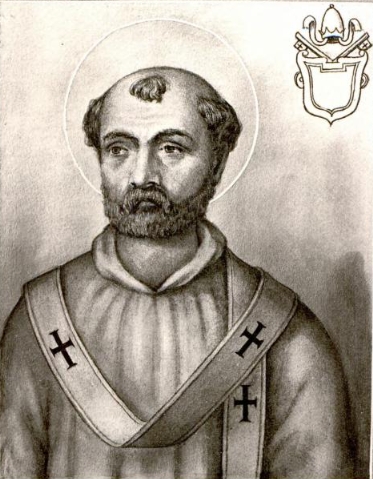 Saint Clement the first, successor to Anacletus, was a native of Rome and a disciple of Saint Peter. Saint Paul speaks of him in terms of warm interest in his Epistle to the Philippians.
Saint Clement the first, successor to Anacletus, was a native of Rome and a disciple of Saint Peter. Saint Paul speaks of him in terms of warm interest in his Epistle to the Philippians. Saint Clement the first, successor to Anacletus, was a native of Rome and a disciple of Saint Peter. Saint Paul speaks of him in terms of warm interest in his Epistle to the Philippians.
Saint Clement the first, successor to Anacletus, was a native of Rome and a disciple of Saint Peter. Saint Paul speaks of him in terms of warm interest in his Epistle to the Philippians.
Clement appointed in Rome seven notaries, who were charged with the duty of collecting the Acts of the Martyrs, and registering them in the records of the Church. Thence originated the institution of the assistant Apostolic Prothonotaries, who were increased to the number of twelve by Sixtus V. To Clement have been attributed several decretals, which are now recognized as spurious. In two ordinations he created fifteen bishops, and ordained ten priests and eleven deacons. During the third persecution he was exiled to Cherson, a city of Pontus, and there drowned in the sea.
Saint Clement wrote two epistles to the Corinthians. The first, which the learned supposed to be lost, was published, almost entire, at Oxford, by Patrick Junius, from a manuscript in the library of the King of England, which manuscript we owe to Thecla, a noble Egyptian lady, who was contemporary with the first Council of Nice. It is one of the finest monuments of antiquity. Tillemont ascribes to it “much unction and strength; its style is lucid, and it greatly resembles the Epistle to the Hebrews. We find in the one not only some of the sense, but also even some of the very words of the other.” This fact has led some critics to believe that Saint Clement was the translator of that epistle of Saint Paul. Many authors also attribute to Saint Clement another letter to the Corinthians, of which there remains a considerable fragment, which was published in Latin by Godefroy Wendelin, and from the Greek by Patrick Junius. It seems, in fact, that Saint Clement was the author of it. Saint Denis of Corinth mentions it in his letter to Soter, and he testifies that from time immemorial it had been read in his church. Saint Irenaeus pronounced it to be very powerful and very persuasive. Clement of Alexandria cites it in his Stromates, and it agrees with the fragment of it which we possess. Origen also cites it in his Commentary on Saint John. Burigny says it is false, that Eusebius, Saint Jerome, and Photius absolutely reject it.
There is a church in Rome known as Saint Clement’s, which is said to occupy the site of the paternal house of this pontiff; it is said to have been built in the reign of Constantine, in memory of the disciple of Saint Peter. It was in that church, the object of the especial veneration of the Romans, that, in 417, Celestius, a disciple of the heresiarch Pelagius, was condemned by Pope Zozimus. It is stated that its title was given to this church under Leo the Great. Before the door is a small portico, supported by four granite columns. From that portico we pass into the atrium, which is surrounded by other porticoes, and ornamented by sixteen granite columns, six of which are on each side, and four opposite to the door by which we enter the church. It is divided into three naves by eighteen columns, which support, with two arches, the side walls. That church gives us an idea of the primitive form of our Catholic basilicas. It is asserted that it was in this church that the body of Saint Clement, brought from the Crimea, rested for some time. Novaes mentions, in a note, authorities which prove, in the terms of the Constitution XIX of Leo IX, that the body of Saint Clement, pontiff and martyr, formed a part of the relics of the monastery of Casaure, in the Abruzzi.
- from "The Lives and Times of the Popes", by Alexis-François Artaud de Montor